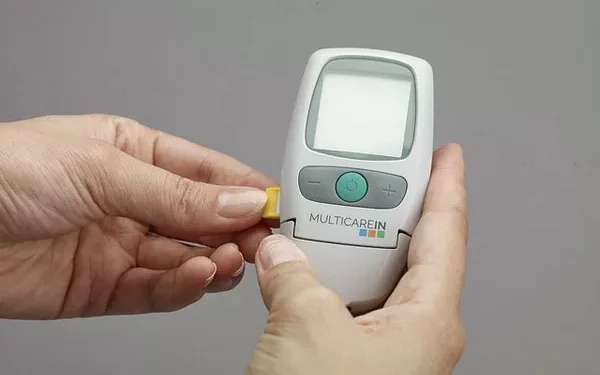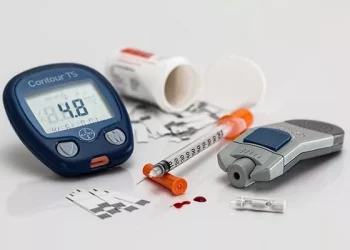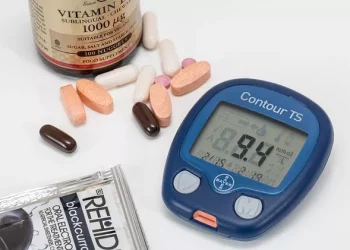Blood sugar, also known as glucose, is a critical component in the human body, providing energy to cells and tissues for normal functioning. However, maintaining the correct level of blood sugar is crucial for overall health, as both low and high blood sugar levels can lead to serious medical conditions. One important measure of blood sugar is the random blood sugar test, which provides insight into how well the body is managing glucose at any given time. This article delves into what constitutes a normal level of random blood sugar, the factors that influence it, and how to properly interpret the results of such tests.
What is Random Blood Sugar?
Before discussing what is considered normal, it’s important to understand what random blood sugar means. Random blood sugar refers to a test measuring your blood glucose level at any time of the day, regardless of when you last ate. This contrasts with fasting blood sugar tests, which are taken after you’ve fasted for at least 8 hours, or postprandial tests, which are done after eating a meal. A random blood sugar test is typically used to quickly assess your current glucose levels and is often conducted in emergency situations, during regular health checkups, or when symptoms of high or low blood sugar are present.
Unlike the fasting glucose test, a random blood sugar test can be taken at any point throughout the day. Since it doesn’t take into account when or what you ate, it offers a snapshot of how your body is handling glucose at that particular moment. Random blood sugar can be influenced by several factors, including meal timing, physical activity, medication, and even stress.
Normal Blood Sugar Levels
The “normal” range for random blood sugar depends on various factors, including age, whether you have diabetes, and your overall health. Generally speaking, for most people without diabetes, the normal range for random blood glucose levels is as follows:
Normal Range: 70 to 140 mg/dL (3.9 to 7.8 mmol/L)
This means that if you are not diabetic, your blood sugar level should fall within this range when measured at any point throughout the day. However, these numbers may vary slightly depending on the laboratory and the specific testing method used.
Blood Sugar Levels in Diabetes
For individuals with diabetes, normal blood sugar levels may be somewhat higher, depending on the individual’s health status, the type of diabetes, and whether the condition is well-controlled. In general, a random blood sugar level of less than 180 mg/dL (10.0 mmol/L) is considered acceptable for most people with diabetes, although specific target levels may be adjusted based on factors such as age, duration of the disease, and the presence of other health conditions.
What Constitutes Abnormal Blood Sugar Levels?
When interpreting blood sugar results, both high and low levels can indicate potential issues. Understanding what constitutes abnormal blood sugar levels can help in early detection and management of health problems like diabetes.
High Random Blood Sugar (Hyperglycemia)
A random blood sugar reading consistently above the normal range may indicate hyperglycemia, a condition where there is too much glucose in the blood. Hyperglycemia can be a symptom of diabetes or a result of poor blood sugar control. If a random blood sugar reading is over 200 mg/dL (11.1 mmol/L), it may suggest that you have diabetes, especially if accompanied by symptoms like frequent urination, excessive thirst, fatigue, or unexplained weight loss.
In individuals with diabetes, blood sugar levels above 300 mg/dL (16.7 mmol/L) often require immediate medical attention as this can be indicative of serious complications such as diabetic ketoacidosis (DKA), a potentially life-threatening condition.
Low Random Blood Sugar (Hypoglycemia)
Conversely, a random blood sugar level that is too low can lead to hypoglycemia, which can cause symptoms such as shaking, dizziness, sweating, confusion, and even loss of consciousness in severe cases. For most people, a blood sugar level below 70 mg/dL (3.9 mmol/L) is considered hypoglycemia, although symptoms may vary between individuals.
Low blood sugar can occur in those with diabetes, particularly if insulin or medications like sulfonylureas are taken without adequate food intake or if there is excessive physical activity. It can also occur in people without diabetes, although this is less common and may be linked to conditions such as insulin-producing tumors, liver disease, or hormonal imbalances.
Factors Influencing Random Blood Sugar Levels
A number of factors can influence your random blood sugar levels, making it essential to consider the context in which the test is taken. Here are a few of the main factors that can cause variations:
1. Dietary Intake
The most significant factor influencing blood sugar levels is food intake. When you eat, particularly meals high in carbohydrates, your blood sugar naturally rises as your body breaks down food into glucose. The time of day and the type of food consumed can impact your blood sugar reading. A sugary snack or carbohydrate-rich meal will cause a higher spike in blood sugar than a protein-based meal or a low-carbohydrate snack.
2. Physical Activity
Exercise can lower blood sugar levels by improving insulin sensitivity and helping your muscles absorb glucose from the bloodstream. However, intense or prolonged physical activity can also cause a temporary increase in blood sugar levels due to the body’s need for energy. This is especially important for people with diabetes, as exercise can have varying effects on blood glucose.
3. Stress
Emotional or physical stress triggers the release of stress hormones such as cortisol and adrenaline, which can increase blood glucose levels. These hormones prepare your body for a fight-or-flight response, and one of their effects is to stimulate the liver to release stored glucose into the bloodstream. Chronic stress can lead to sustained high blood sugar levels.
4. Medications
Certain medications can influence blood sugar levels. For instance, corticosteroids can raise blood sugar levels, while other medications like insulin and oral hypoglycemic agents are used to lower blood sugar. If you are taking medication, it’s important to monitor your blood sugar closely, especially if the dosage changes or if you are taking a new drug.
5. Hormonal Changes
Hormonal fluctuations, especially in women, can influence blood glucose levels. For instance, during pregnancy, some women may develop gestational diabetes, leading to elevated blood sugar levels. Similarly, changes in hormone levels during the menstrual cycle, menopause, or thyroid dysfunction can affect how the body processes glucose.
6. Illness
When you are sick, your body is under stress, and it may produce hormones that increase blood glucose levels. Even mild illnesses such as the flu or a cold can elevate blood sugar temporarily. In people with diabetes, infections or fever can lead to significant changes in blood sugar levels and may require adjustments to medication or insulin.
How is Random Blood Sugar Tested?
Testing your random blood sugar is relatively simple. The test typically involves using a glucometer, a small portable device that can be used to measure blood glucose levels. To perform the test, you will typically prick your finger with a lancet, collect a small sample of blood, and place it onto a test strip that is inserted into the glucometer. After a few seconds, the glucometer will display your blood sugar reading.
When Should You Get a Random Blood Sugar Test?
A random blood sugar test is commonly used for the following reasons:
Diagnosis of Diabetes: A random blood sugar test may be part of the diagnostic process for diabetes, especially if you have symptoms such as excessive thirst, frequent urination, fatigue, or unexplained weight loss.
Routine Monitoring: People with diabetes often use random blood sugar tests to monitor how well their glucose levels are being controlled and to identify any sudden changes.
Emergency Situations: If someone shows symptoms of high or low blood sugar, a random blood sugar test can be done quickly to determine whether the blood sugar is too high or low.
Managing Blood Sugar Levels
Managing your blood sugar is key to maintaining health and preventing complications. For those with diabetes, this often includes a combination of medication, diet, and exercise. Here are some tips for maintaining normal blood sugar levels:
1. Follow a Balanced Diet
Eating a balanced diet that includes plenty of whole grains, fruits, vegetables, lean proteins, and healthy fats can help maintain stable blood sugar levels. Limiting sugary and processed foods is also important.
2. Exercise Regularly
Regular physical activity helps your body use glucose more efficiently. Aim for at least 30 minutes of moderate exercise most days of the week.
3. Monitor Blood Sugar Regularly
Frequent blood sugar monitoring helps ensure that your levels remain within the target range. If you are managing diabetes, your healthcare provider may recommend testing your blood sugar multiple times a day.
4. Take Medications as Prescribed
If you are prescribed medication for diabetes, ensure that you take it as directed. Adjustments to your medications should only be made in consultation with your doctor.
5. Manage Stress
Since stress can raise blood sugar levels, finding ways to manage stress, such as practicing relaxation techniques or engaging in hobbies, is essential for keeping blood sugar in check.
Conclusion
The normal range for random blood sugar is generally between 70 and 140 mg/dL for individuals without diabetes. However, various factors, including diet, physical activity, stress, and illness, can influence these levels. For individuals with diabetes, managing blood sugar effectively is crucial to preventing long-term complications, and regular monitoring is an essential part of maintaining health. If you are concerned about your blood sugar levels or have been diagnosed with diabetes, consulting with your healthcare provider is essential for developing a personalized management plan.
Related topics:
What’s the Average Diabetes Number
























